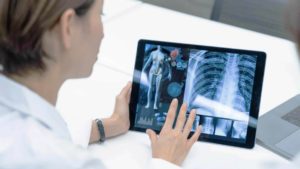American healthcare cost is ever-increasing, whereas the outcomes seem to be lagging other nations consistently. Health initiatives for the population promise to improve overall patient health while optimizing care and radiologists have been placed in a once-in-a-lifetime position to lead this change.
This is the firm belief of top imaging specialists from across the country outlining the role of this specialty in overall population health management initiatives or PHMs, according to the American Journal of Roentgenology.
Jessica H. Poremka, MD, a radiologist at the recognized University of Texas Southwestern Medical Center, Dallas, with her colleagues wrote, “The presence of radiologists at various intersections of healthcare, such as diagnostic imaging, image-guided therapies, and screening, provides a major opportunity for better radiologist engagement in the PHM.” They also added that this particular facility has a limited engagement for such programs to date.

Noted below are the 7 consensus takeaways:
#1: Screening programs are the key to identify the entire population that is eligible for all types of preventative imaging as well as promote evidence-based guidelines for optimizing outcomes. Radiologists play an important role in these programs spanning everything from lung and breast cancer to screenings of abdominal aortic aneurysm.
#2: Quality assurance and radiology information should be prepped up to enhance quality as well as streamlined strategies for health management, according to the authors. This also includes the Appropriate Use Criteria, related software and system, and support tools for clinical decisions.
#3: The number one cause of death in adults can be spotted with the help of imaging exams, as well as opportunistic scanning has to be standardized to make sure decreased cost and positive outcomes. For instance, Porembka and their team cited that adding quantitative bone mineral density CT to CTC screening is one chance of detecting osteoporosis.
#4: Developers and radiologists should also use larger data sets for the population to develop AI algorithms, which address public health concerns and solves population roadblocks of health management.
#5: Collaborating with different specialties, specifically primary healthcare providers, is critical for effective value-based initiatives. Radiologists can detect emphysema findings for PCPs to CT of the chest, for instance, as one opportunity for performing pulmonary function tests or recommend pulmonologist consultation.
#6: Several financial models command the participation of multiple specialties, directly and indirectly, which requires the support of radiology. Both diagnostic as well interventional radiologists should participate in various aspects of MACRA and MIPS, as per the ACR. For the moment, PAMA, and accountable healthcare organizations, welcome the participation of radiologists, according to the authors.
#7: Finally, radiologists and imaging experts should engage with different multispecialty groups, payers, hospitals, to participate freely in different community comment periods as well as quality initiatives pushing successful population health initiatives.
Imaging is critical for medical diagnosis and treatment plans. At sepStream®, we take charge of your healthcare imaging. We use AI-enabled software solutions to deliver accurate results and promote early diagnosis and care.